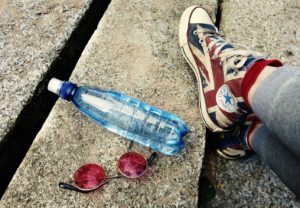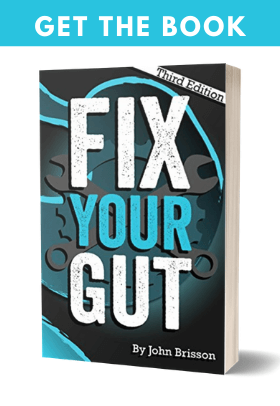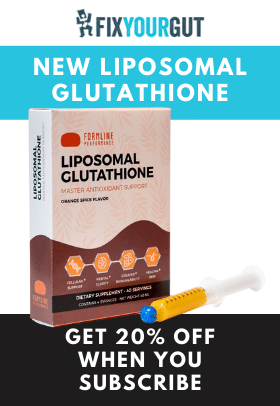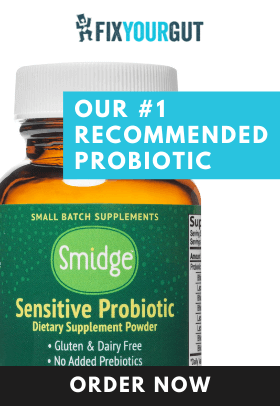Several months ago, a treadmill review company published an article on their website with the intent of showing people that their water bottle could be potentially contaminated “and the act of quenching your thirst while you exercise could potentially make you sick.” The article was picked up by many websites including The Sun, Fox News, and USA Today. Even Robb Wolf was talking about it on the Joe Rogan Experience and equivocating this to a modern day “traveler’s sickness.”
Gut health is fascinating to me, and when I heard about it, I was excited (which created some cognitive bias that I needed to rationalize before sharing my take on this information). The first thing that I did was to reach out to the treadmill company. I told them who I was and that I was intending to write an article to explore their findings. I asked them if they published their findings in any sort of peer-reviewed journal, or if they would be willing to share their data with me for the article. My inquiry was completely ignored, which is a big red flag.
Now, my cognitive bias has been shifted into an entirely different direction. Why didn’t they share any information, or at least respond? It doesn’t cost them but a little bit of time, they are not forgoing any trade secrets, and they really have nothing to lose by sharing the information, so I became immediately skeptical. I read the article again and found several problems.

Methodology
“We swabbed three water bottles for each different type of water bottle (screw-top, slide-top, squeeze-top, and straw-top) for a total of 12 swabs. Each water bottle had been used by an athlete for a week without being washed. EmLab P&K performed all laboratory testing.”
In most studies, the methodology section is more than two sentences in length. Typically, we see several paragraphs and an adequate amount of detail. We are left with the questions: how was the data assessed? They claim that it was the average of the three bottles tested, but did each athlete use the same water bottle? Or, were there twelve athletes using twelve water bottles? Did they share water bottles? What is the significance of CFU measurements versus a genetic library?
Testing
I looked up EmLabs and looked at the tests that they offer. The tests offered do not appear to reflect the data reported. EmLabs does provide data using the site provided, but the results are not congruous to the findings on the website. They report that “99 percent of the germs on the squeeze-top bottles and 98 percent of the germs on the screw-top bottles are the bad kind – gram-negative rods.” The problem is that these tests produce a culture and match them to a genus- or species-based genetic library (the top 3 most prevalent, or the top 5). This is not a wide assay of information as presented. Plus, the information received is not quantified as “rod-shaped,” nor “gram negative.” These data do not represent the types of tests performed.
Conclusions
Let’s look at this emboldened heading from the article:
“To put it bluntly, drinking from the average refillable bottle can be many times worse than licking your dog’s toy.”
We must ask why this conclusion was drawn. The only metric they describe in comparing the two is the total colony forming units. We also must ask where the data from the dog toy is coming from because there is no citation. Did they test it through EmLabs? How? Did they get the information from another source? Who?
For the sake of argument, let’s assume that the same person used the same water bottle for a week without washing it. Let’s also assume that they swabbed the part of the bottle that contacts the mouth. Then, where are the bacteria coming from? They are concluding that it is worse to be exposed to bacteria that were already in your mouth to begin with. What is the comparison with the CFU content of the bottle versus your own mouth? 
We can make a similar argument to a swimming pool: A hypothetical researcher notices that people sometimes drown in swimming pools. They also notice that some people take a glass of water with them to go swimming and the glass of water spills into the pool. Therefore, the researcher concludes that it is worse to go swimming with a glass of water because the water spills into the pool thus adding to the volume of water in the pool further increasing your chance of drowning. This study is complete nonsense, and so is my example.
Dogs have different bacteria in their mouths. They get into all kinds of things, they lick all kinds of things, and so on. There is going to be different genetic variation from the bacteria in a dog’s mouth than in your own mouth. Is this going to make you sick? Not necessarily, but logically speaking, it has the greater chance of making you sick.
Another issue is that they indicate that none of this is a problem if you simply wash your water bottle, but because of the lack of controls, we have no data to justify this conclusion. To make this claim, at the very least, we should see data sampled after just a single use of each water bottle compared to a week’s use.
Summary
You have to fact check your sources and think critically about them. Just because you like the information, and it seems intuitive does not make it true. If they had the tests performed, they should share the data. If they didn’t, they should apologize and delete the article. In any case, they should think critically about their findings and issue a follow-up. Are their readers getting sick from there water bottles? Who are they? How is this happening? Where is the clinical evidence? There are too many questions and not enough answers, but the dangerous part is that there are too many conclusions drawn from assumptions that are baseless.
My recommendation: before you publish an article, you should do some research on your own and not take everything as fact; otherwise, you are just helping to spread misinformation.

What do you think about this article? We would love to hear your opinion in the comments!







Reminding me to think seriously about that water bottles can sick us. Thanks for posting this.
Thank you for reminding me to think critically. Enjoyed your article.